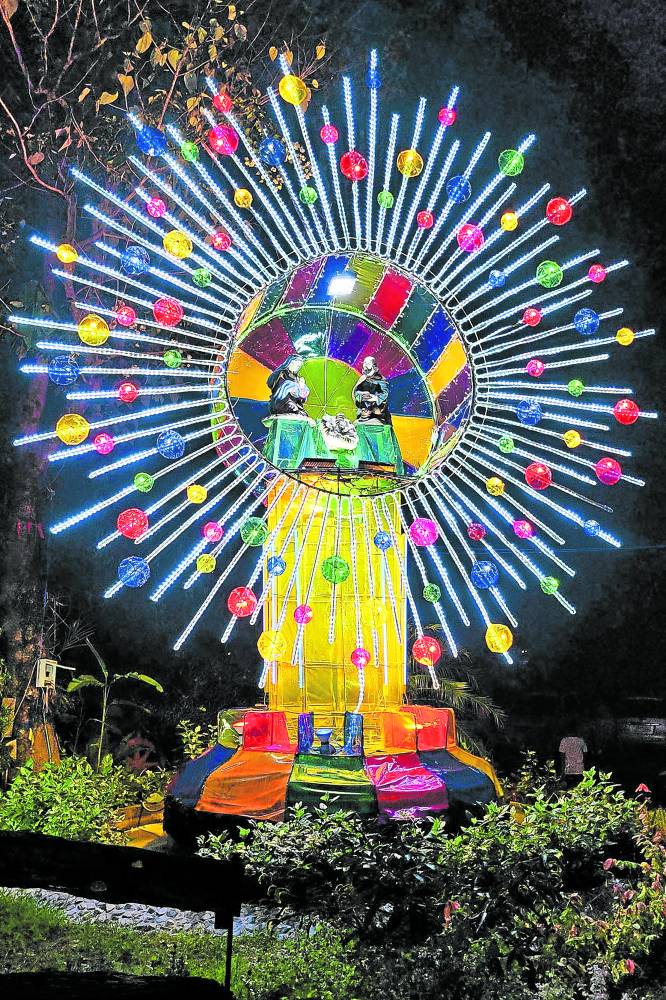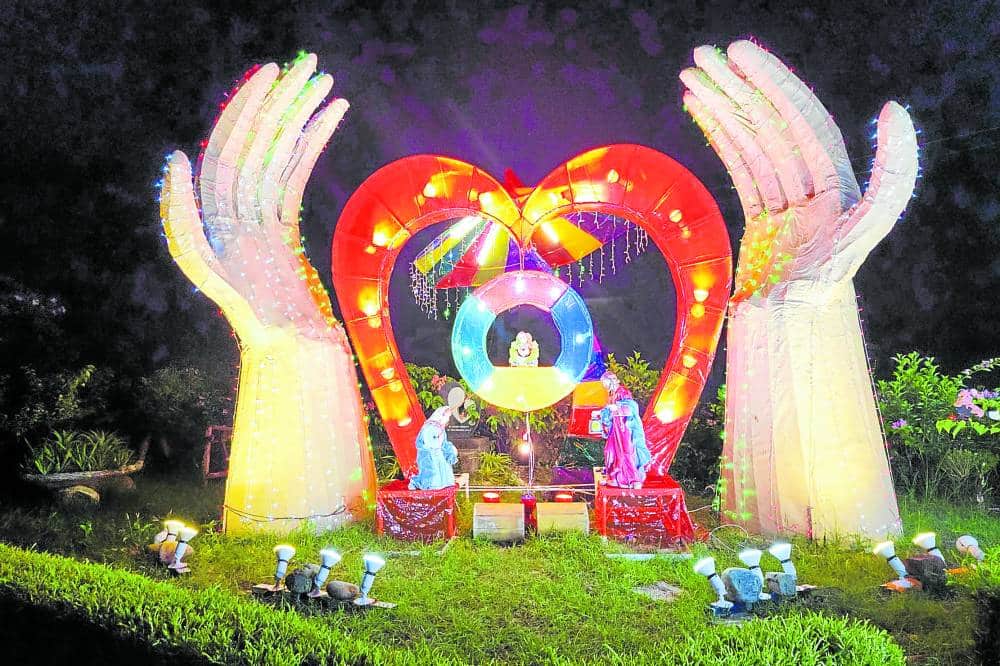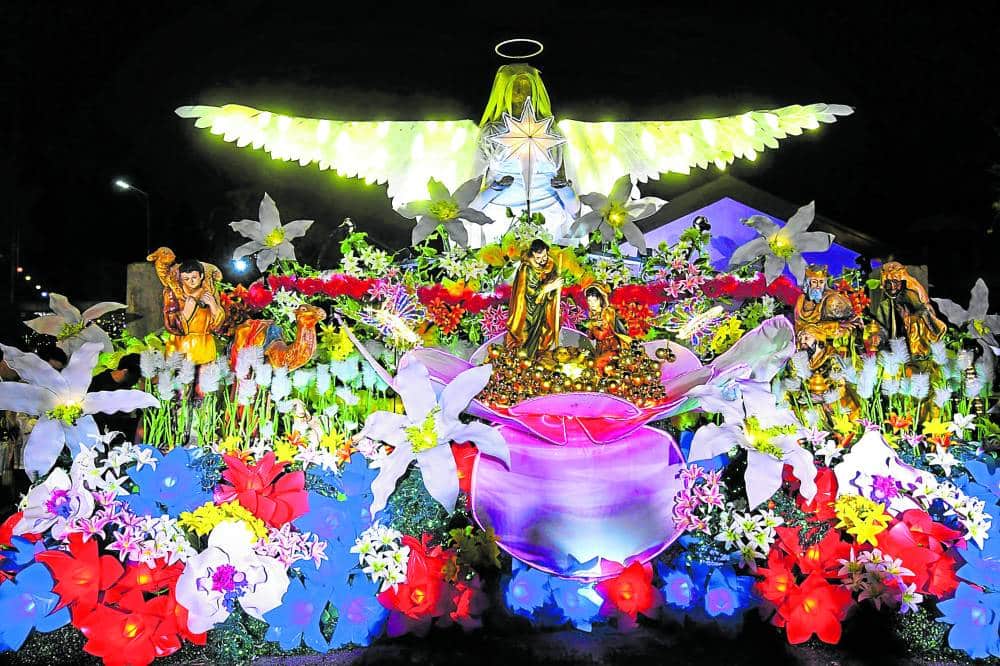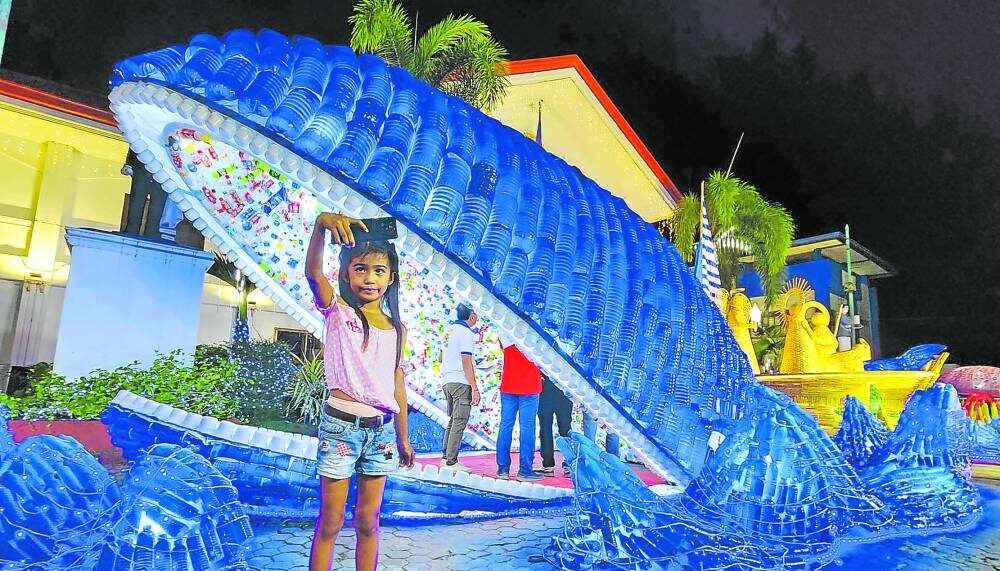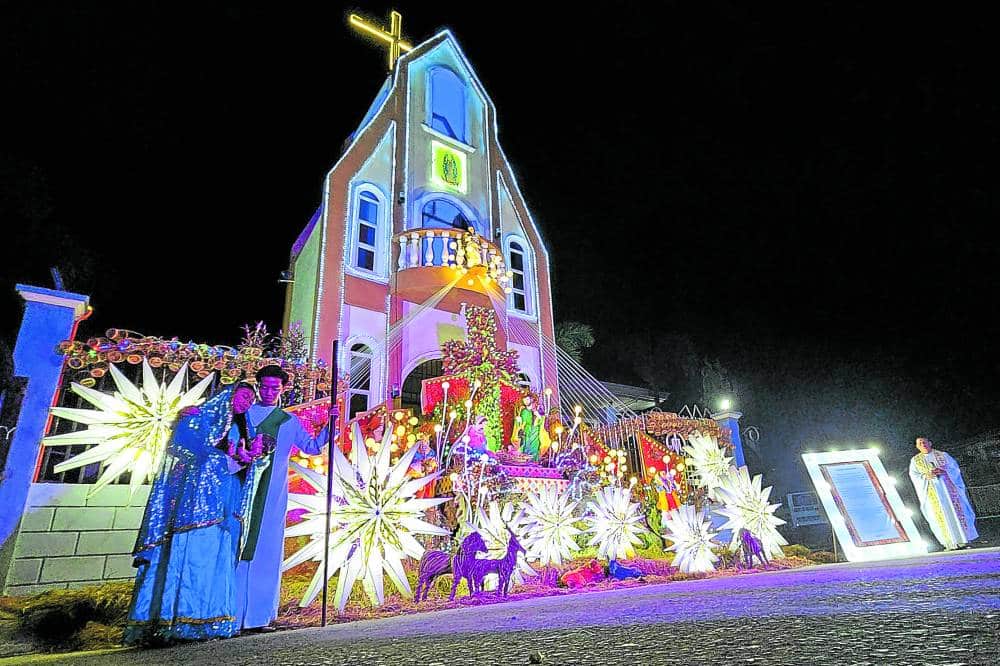Nature, conservation in Tarlac’s ‘Belenismo’
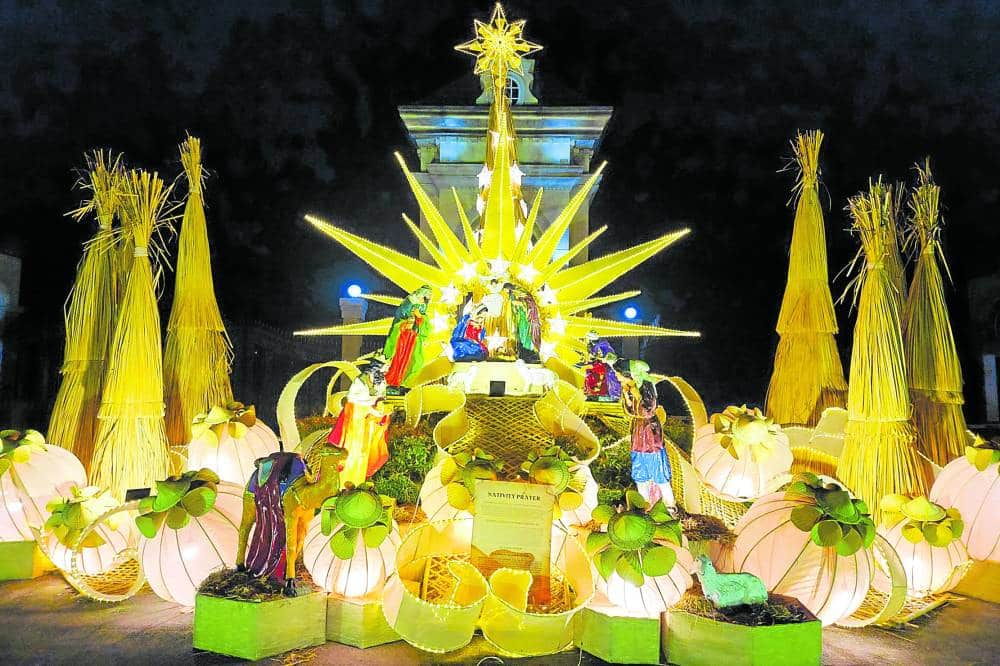
CHRISTMAS GLOW This year’s Belenismo sa Tarlac features 62 giant “belen” (Nativity scene dioramas) from different local governments, agencies, parishes and businesses. This Christmas community activity helped Tarlac earn the title of “Belen Capital of the Philippines.” —Photos by Willie Lomiba
TARLAC CITY, Philippines — The province of Tarlac is aglow once again but its 62 “belen” or Nativity scene models participating in the 17th staging of “Belenismo” this year not only shine as visions of the first Christmas but also convey messages for the conservation of nature.
In San Manuel town, the huge diorama titled “Saving the Dying Ocean” features the Holy Family on board a boat situated in an underwater themed belen. Around the usual images at the birth of Christ, a jellyfish made from an old umbrella and starfish designed from bottle caps floated.
A 30.48-meter (100 feet) wide whale filled with plastic bottles depicting the trash that clog drainage systems and worsen flooding represents the current situation of the country every rainy season. It was made out of water gallons painted blue, while its teeth were made of white discarded noodle cups. Its mouth is filled with hanging colorful plastic bottles that were all donated by the townsfolk and collected from public schools.
The belen, which was put together in three months and was designed by San Manuel municipal architect Dale Bryan Cabuyao, aims to call awareness for onlookers to be more disciplined in discarding waste and to mitigate the effects of climate change.
Article continues after this advertisementIn San Clemente town, a two-time Hall of Fame awardee, the entry was inspired by baskets during offertory in the Catholic Masses.
Article continues after this advertisementDubbed as the “the greatest offering of all time,” this diorama was made from bright yellow painted plastic bricks that look like an offering basket in a Church altar.
This 12-m high belen is made of plastic, collected and turned into paper blocks, plastic bottles, baskets, rattan, “solihiya,” roof, bamboo and metals.
Boxes of gifts
JM Modomo, budget and tourism officer of San Clemente, designed the belen made from ground trash that were turned into paper blocks. They reused 1,000 bottles featured in a hot air balloon from last year’s diorama.
Huge boxes of gifts are the main attraction of the local government of Capas in its belen designed by Jessie Dizon, the officer in charge of Capas motorpool. The boxes, painted red, blue and white, were made from large water containers and adorned with cylinder head gaskets from old vehicles, which serve as ribbon. The infant Jesus lays in the cylinder head gaskets formed into a manger.
Dizon opted to create huge gift boxes surrounding the Holy Family because these are the “blessings from the Redeemer.”
In Moncada town, a huge heart with a “Love Moncada” banner served as the backdrop of a Filipino- themed belen featuring the official logo of the town’s “Kamote festival.” This was also inspired by the town’s cultural dance, La Jota Moncadena.
Beside the Holy Family are four statues dressed in traditional clothes with straw-hats and bandana waving at visitors, seemingly inviting them to look through their display.
Moncada town is also celebrating its 150th anniversary and is known for its giant and colorful belen that is often a delight to travelers passing through the national highway.
‘Belen’ for children
Soldiers from the Armed Forces of the Philippines’ Northern Luzon Command and the Armor Division also showcased their craftmanship in making huge dioramas. This year, their entry is more child-friendly with swings and slides installed in their displays.
The Armor Division belen, which is displayed at Azcaya Garden Resort in Tarlac City, portrays a giant colorful crayon playhouse that teaches visitors to embrace each other’s differences.
The AFP belen at Camp Serviallano Aquino in Barangay San Miguel also in Tarlac City mimics a lighthouse that safeguards seafarers navigating dark seas. It also has a plane made from rubber mats and plastic bottles. Beneath the plane is the Holy Family placed on a ship deck at the center of the belen.
This belen’s lighthouse is placed at back of the plane while the ship deck features stairs and rattan chandeliers. It lets people enjoy the view from above, where one can see the full design of the belen.
San Lorenzo Ruiz Parish in Tarlac City features three dioramas made of colorful plastic sheets, iron, rocks and metal frames depicting the stained-glass windows that are commonly seen in churches. They also used old church curtains and cloth donated by parishioners to form two big palms in their belen display.
The parish features a monstrance-inspired belen made of bamboo, cellophane and discarded metal. Instead of the holy host, the Holy Family is placed at the center of the monstrance.
The Our Lady of Guadalupe’s diorama in Bamban town, created by Aldrin Medina, is made of dried leaves, baskets, branches and dried corn peelings that were used for the Child Jesus’ manger.
Situated in front of the parish bell tower, the display stands out with its red and gold panels that serve as a backdrop. An angel is also hovering above the Holy Family while dried leaves formed into a cross that sits in the middle. Its foreground is adorned with white lanterns, adding contrast and highlighting the diorama’s indigenous materials.
School display
Tarlac State University (TSU) named its diorama “Belen ng Kalikhasan,” which calls to appreciate and preserve nature. The roots from trees in the belen represent the extension programs of the university to local governments in Tarlac that have reached the communities.
Oscar Ubusan, the belen designer, used cement, cloth and iron steel bars to form a precast for the figures of the angel, trees, mushrooms and rocks. He also used discarded plywood, repurposed old plastic cubicle dividers used during the COVID-19 pandemic, bamboo, abaca mat and coco mesh.
The TSU belen features the painted skies and the moving halo background of the angel in the center is powered by an old car battery made by electrician Victor Enrico.
SM City Tarlac’s belen is covered in huge half sphere portaying meteor showers. Its sinamay fabric and abaca represent the Filipino setting that is unique and the simple way of life of the Savior.
The 9.75-m (32 feet) wide platform is made of recycled materials from the mall’s expansion which were wrapped in solihiya representing Filipino craftmanship and tradition.
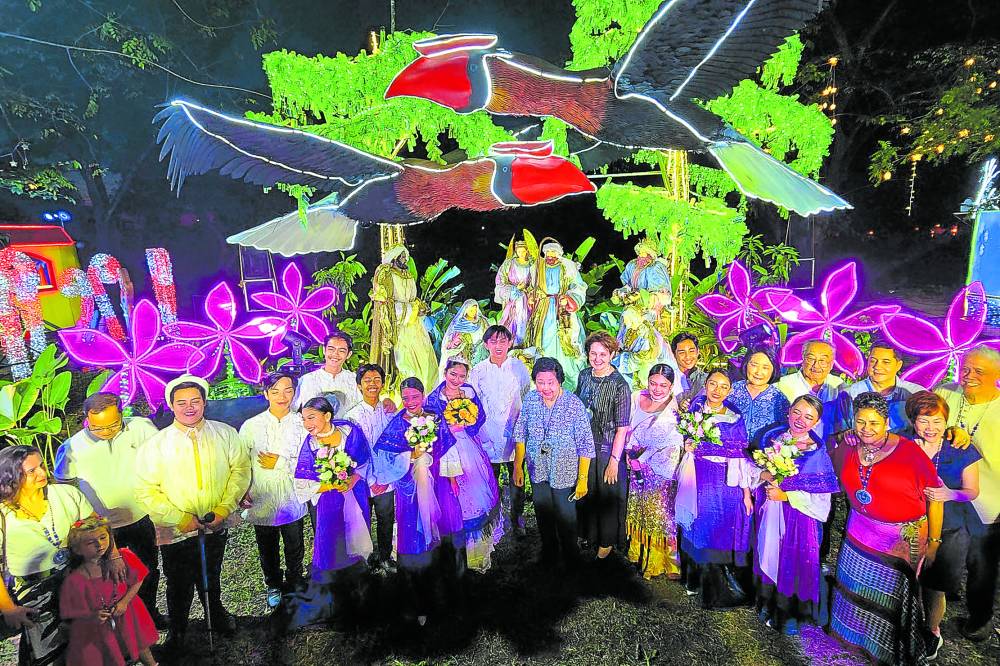
VIP GUEST US Ambassador to the Philippines MaryKay Carlson joins Belenismo organizers, mother and daughter Isabel Cojuangco and Dr. Isa Cojuangco Suntay of the Tarlac Heritage Foundation, during her visit in Tarlac City early this month to view the Christmas displays.
Largest number
This year’s festival and competition gathered the largest number of entries since Belenismo was organized in 2007: 17 entries in the community category, 13 in the Church category, 14 in the monumental category, six in the grand non-municipal category, and 12 in the grand municipal category.
The 62 belens were opened for viewing early this month will be on display until Jan. 6, the Feast of the Three Kings.
The Belenisimo sa Tarlac was organized by the Tarlac Heritage Foundation, led by its cofounder Dr. Isa Cojuangco Suntay. It became so popular that the Department of Tourism named Tarlac province as the “belen capital of the Philippines” in 2010.
